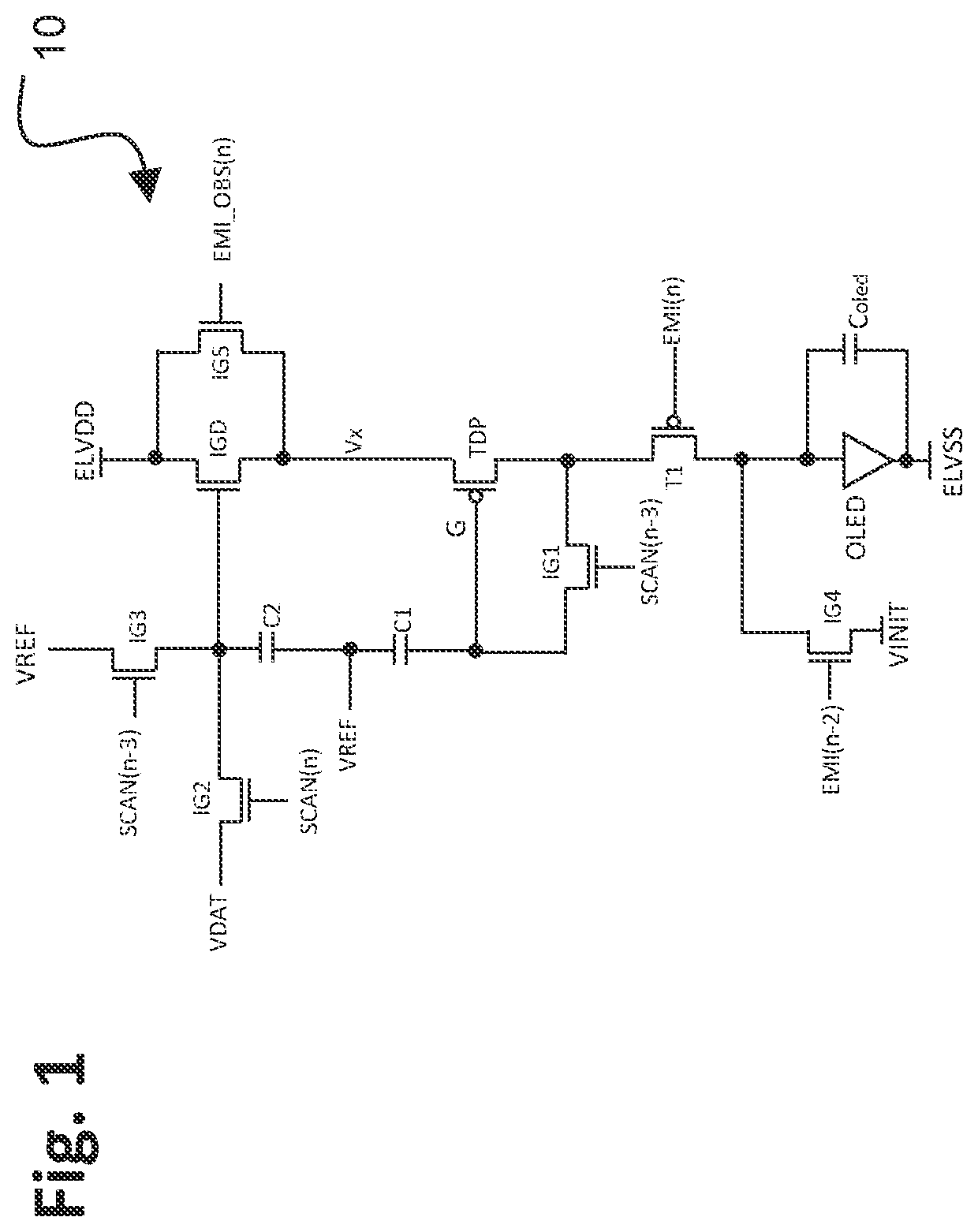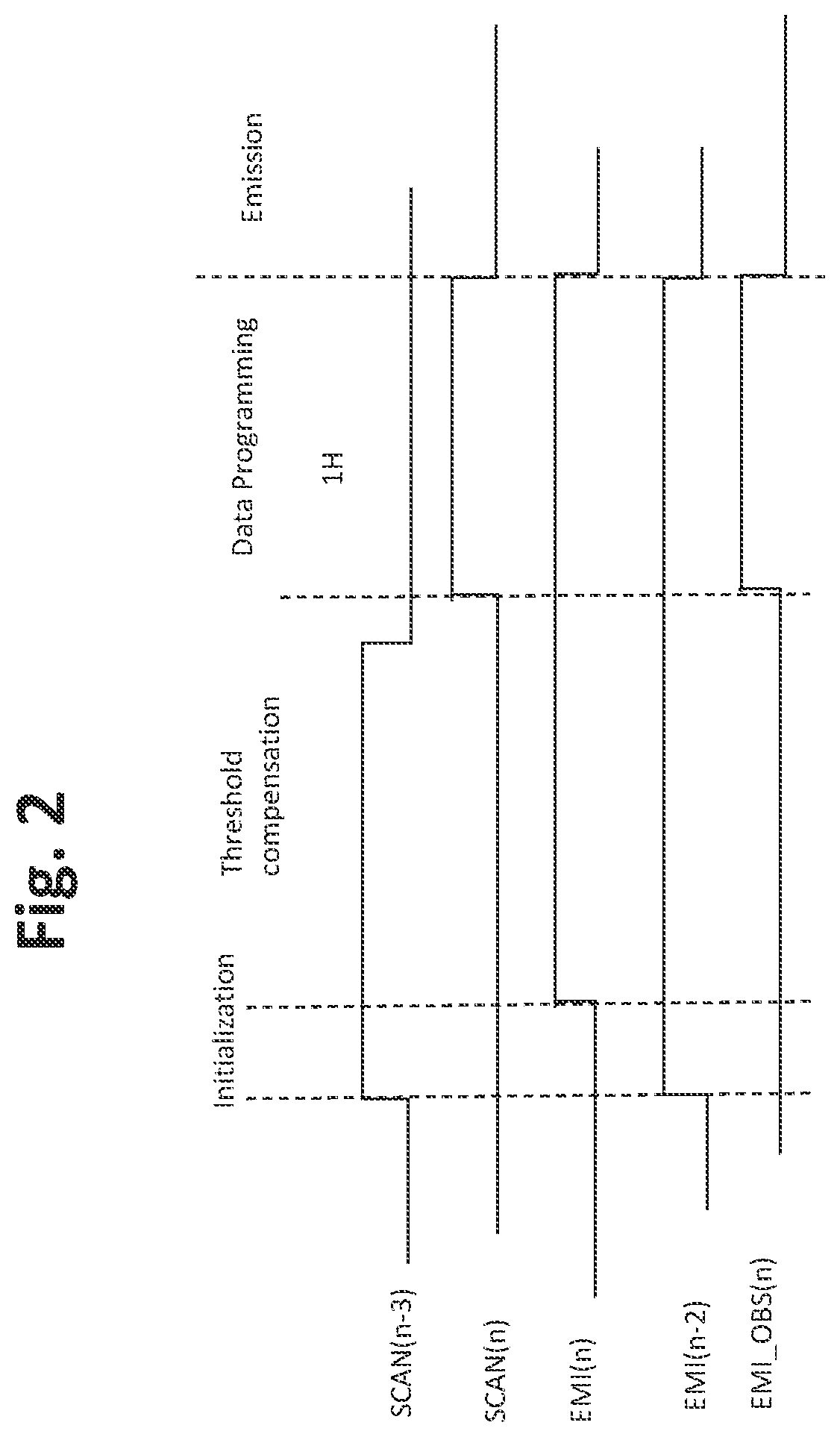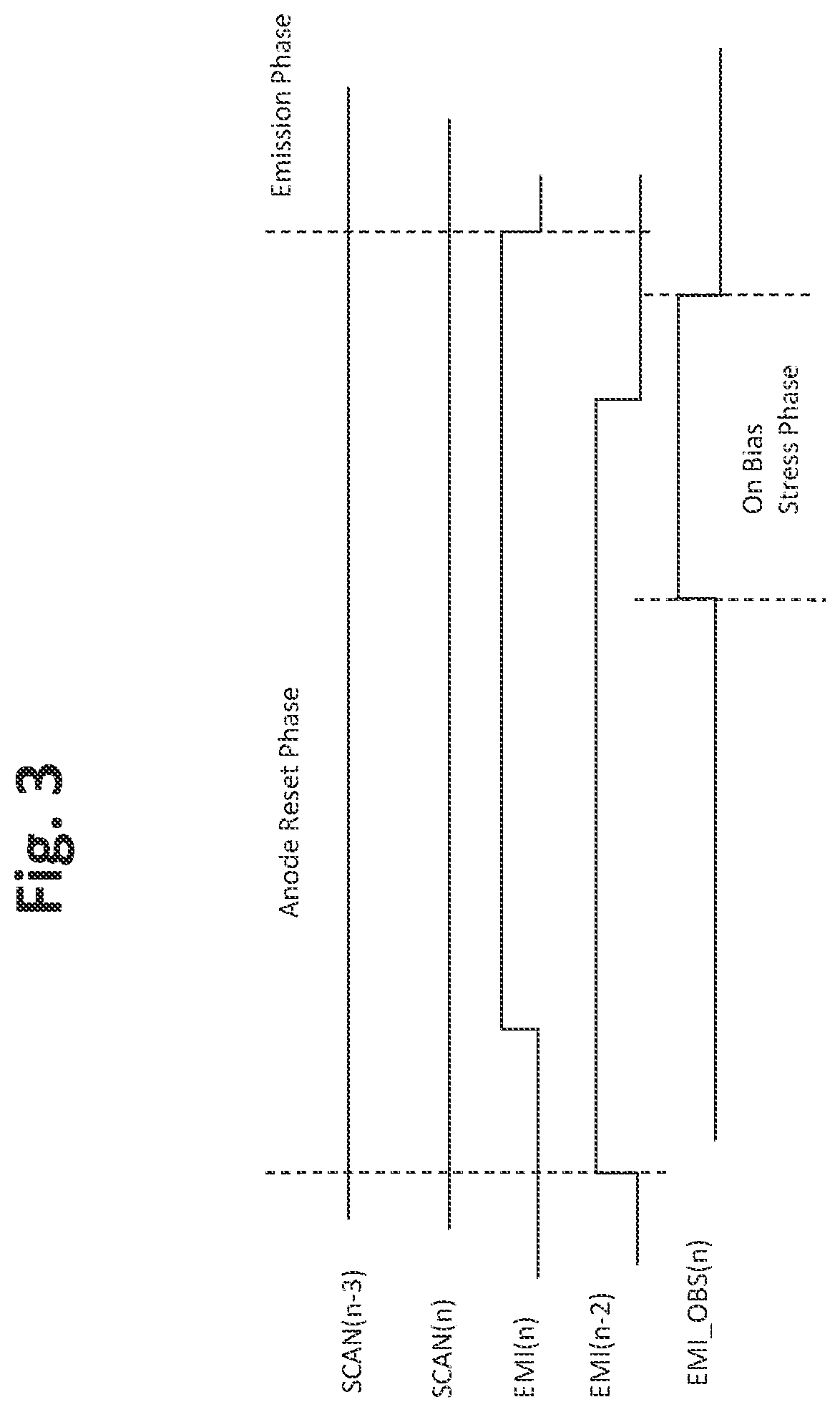TFT pixel threshold voltage compensation circuit with a source follower
a compensation circuit and source follower technology, applied in the field of electronic circuit design and operation, can solve the problems of non-uniform luminance, difficult to reduce further without degrading compensation accuracy, etc., and achieve the effect of eliminating hysteresis effects and reducing the hysteresis
- Summary
- Abstract
- Description
- Claims
- Application Information
AI Technical Summary
Benefits of technology
Problems solved by technology
Method used
Image
Examples
Embodiment Construction
[0029]Embodiments of the present application will now be described with reference to the drawings, wherein like reference numerals are used to refer to like elements throughout. It will be understood that the figures are not necessarily to scale.
[0030]FIG. 1 is a drawing depicting a first circuit configuration 10 in accordance with embodiments of the present application, and FIG. 2 is a timing diagram associated with the operation of the circuit configuration 10 of FIG. 1 that is associated with a normal or refresh operation. FIG. 3 is a drawing depicting a timing diagram associated with the operation of the circuit of FIG. 1 that is suitable for low frequency or non-refresh operation.
[0031]In this example, the circuit 10 is configured as a thin film transistor (TFT) circuit that includes multiple p-type transistors TDP and T1, multiple n-type transistors IGD and IG1˜IG5, and two storage capacitors C1 and C2. In exemplary embodiments, the p-type transistors are low-temperature polyc...
PUM
 Login to View More
Login to View More Abstract
Description
Claims
Application Information
 Login to View More
Login to View More - R&D
- Intellectual Property
- Life Sciences
- Materials
- Tech Scout
- Unparalleled Data Quality
- Higher Quality Content
- 60% Fewer Hallucinations
Browse by: Latest US Patents, China's latest patents, Technical Efficacy Thesaurus, Application Domain, Technology Topic, Popular Technical Reports.
© 2025 PatSnap. All rights reserved.Legal|Privacy policy|Modern Slavery Act Transparency Statement|Sitemap|About US| Contact US: help@patsnap.com



